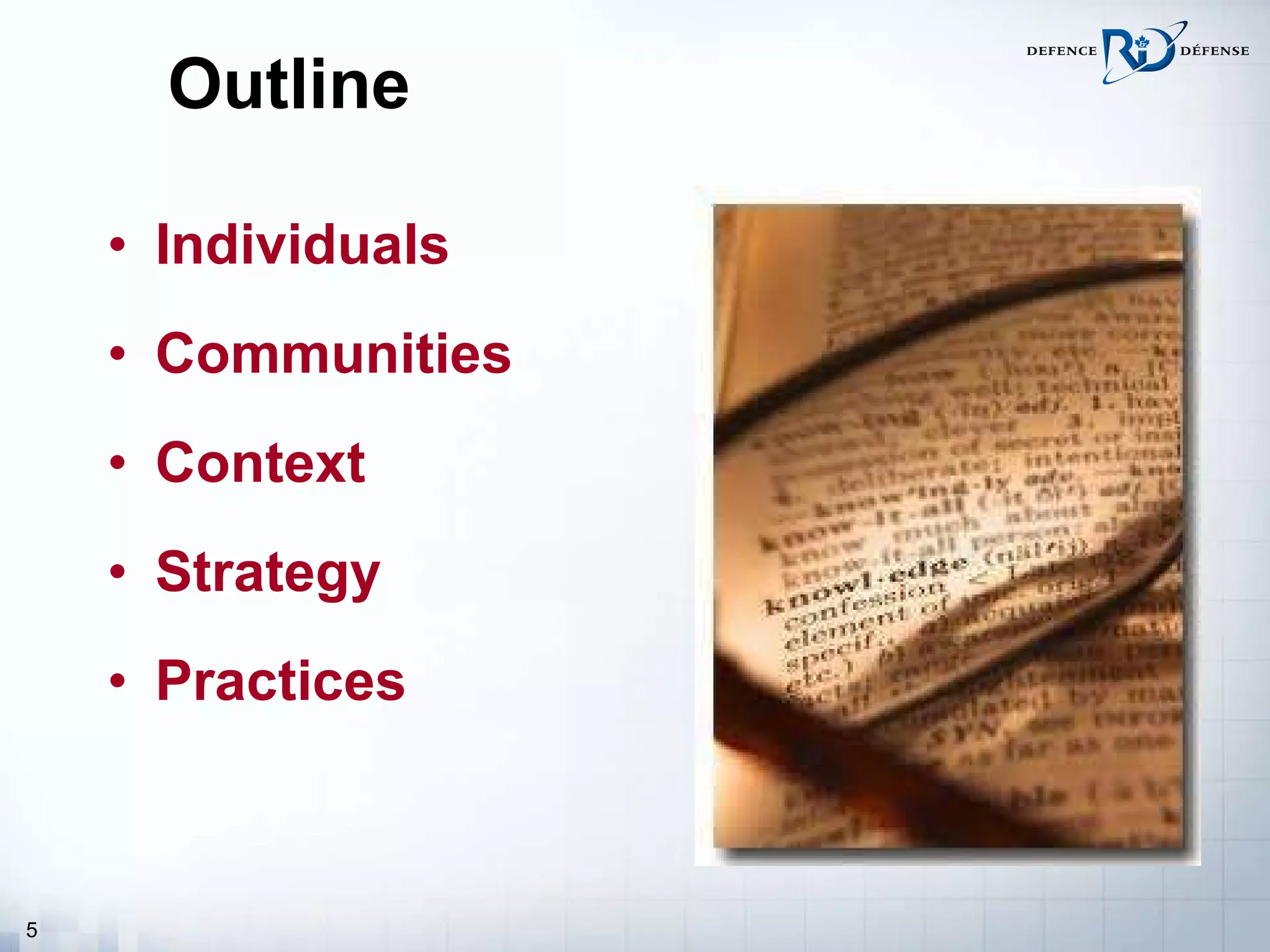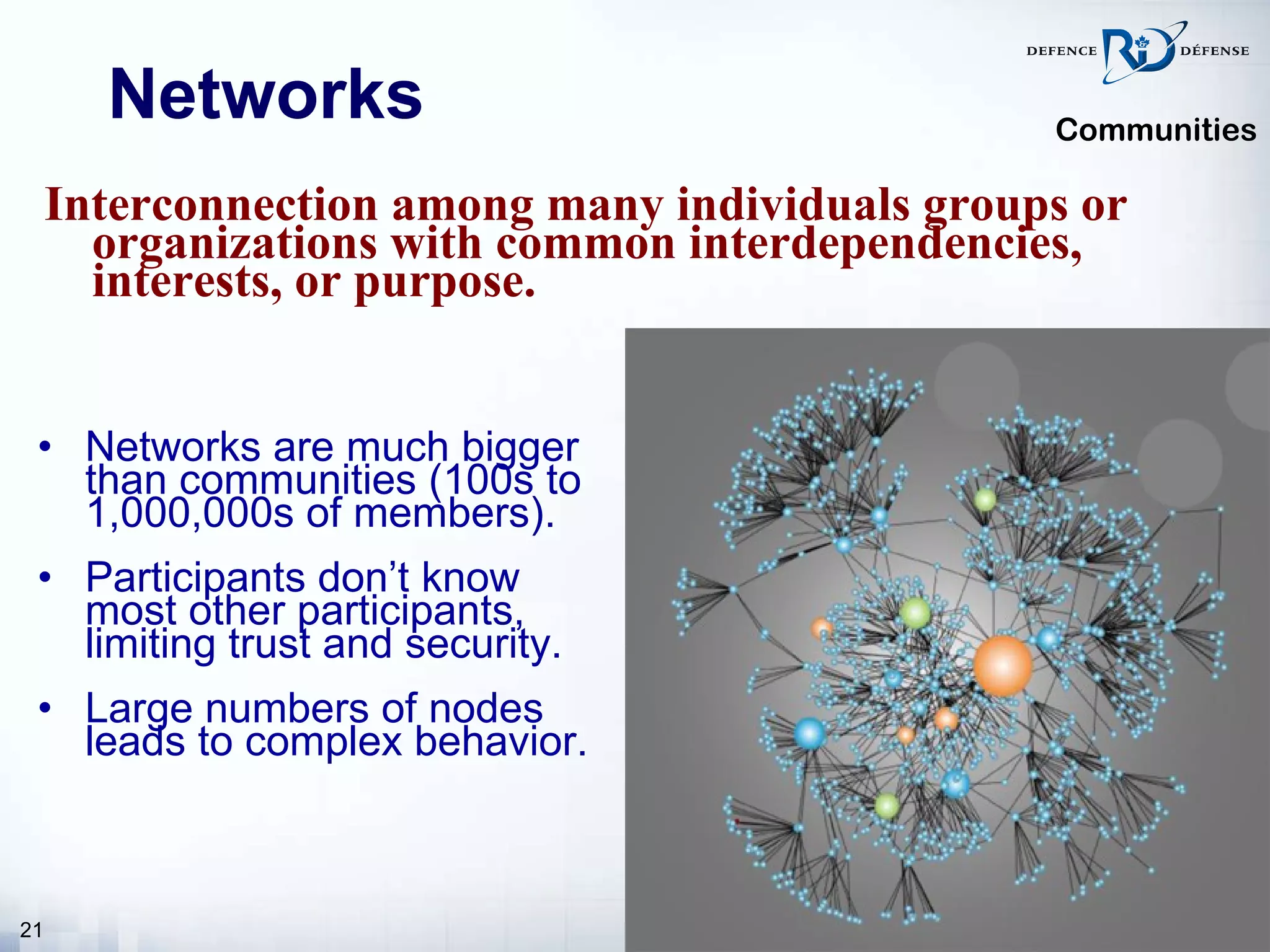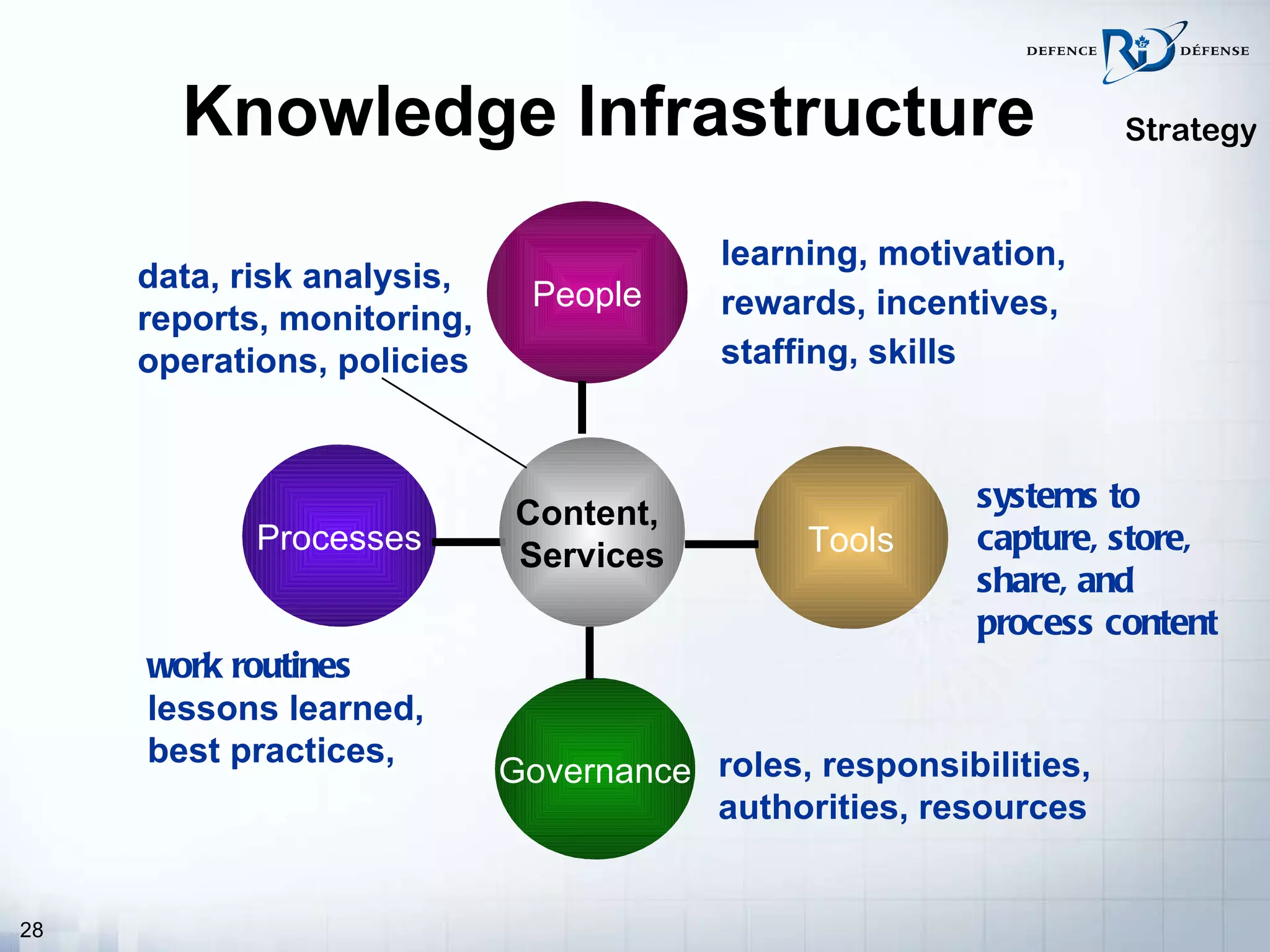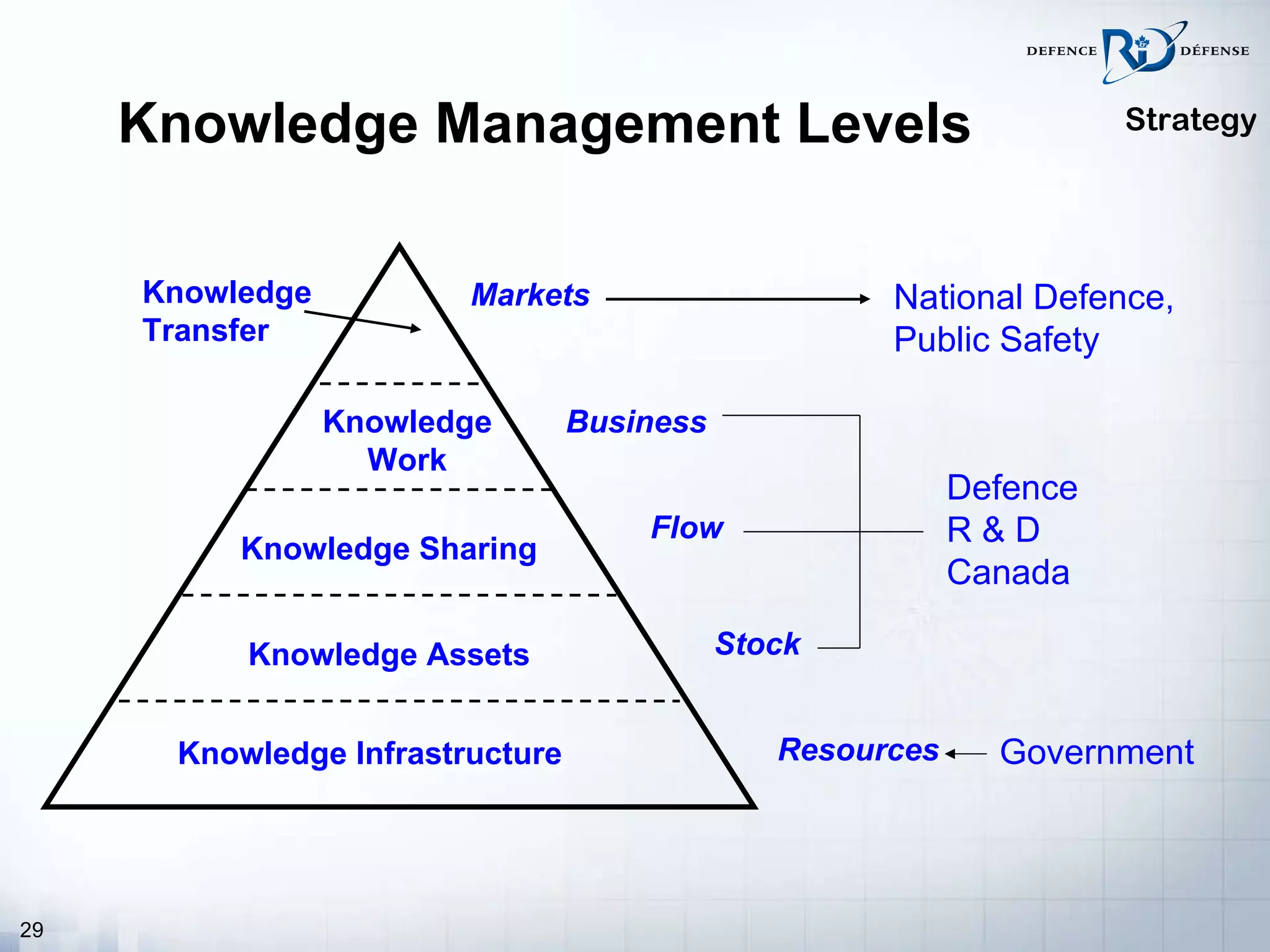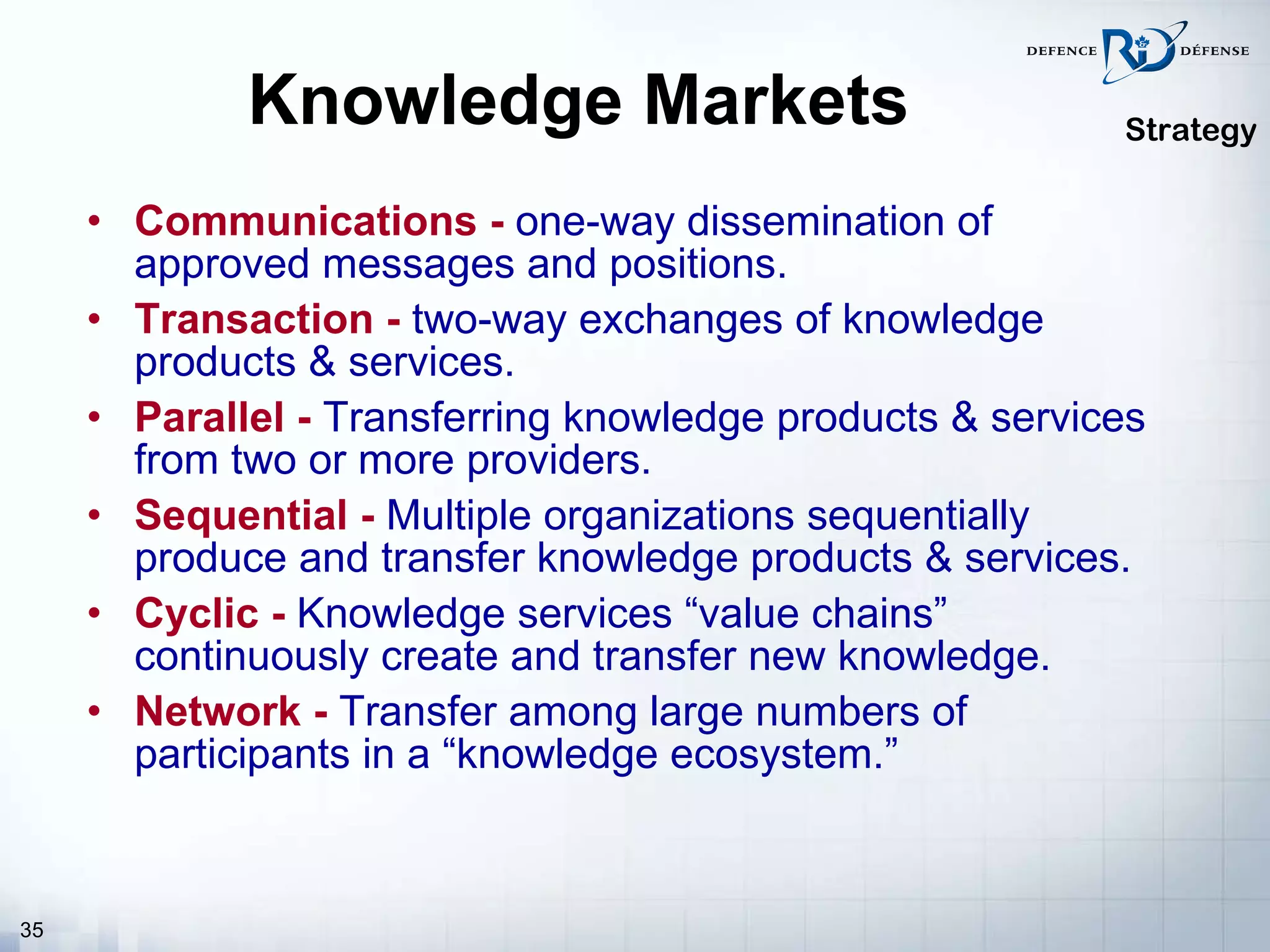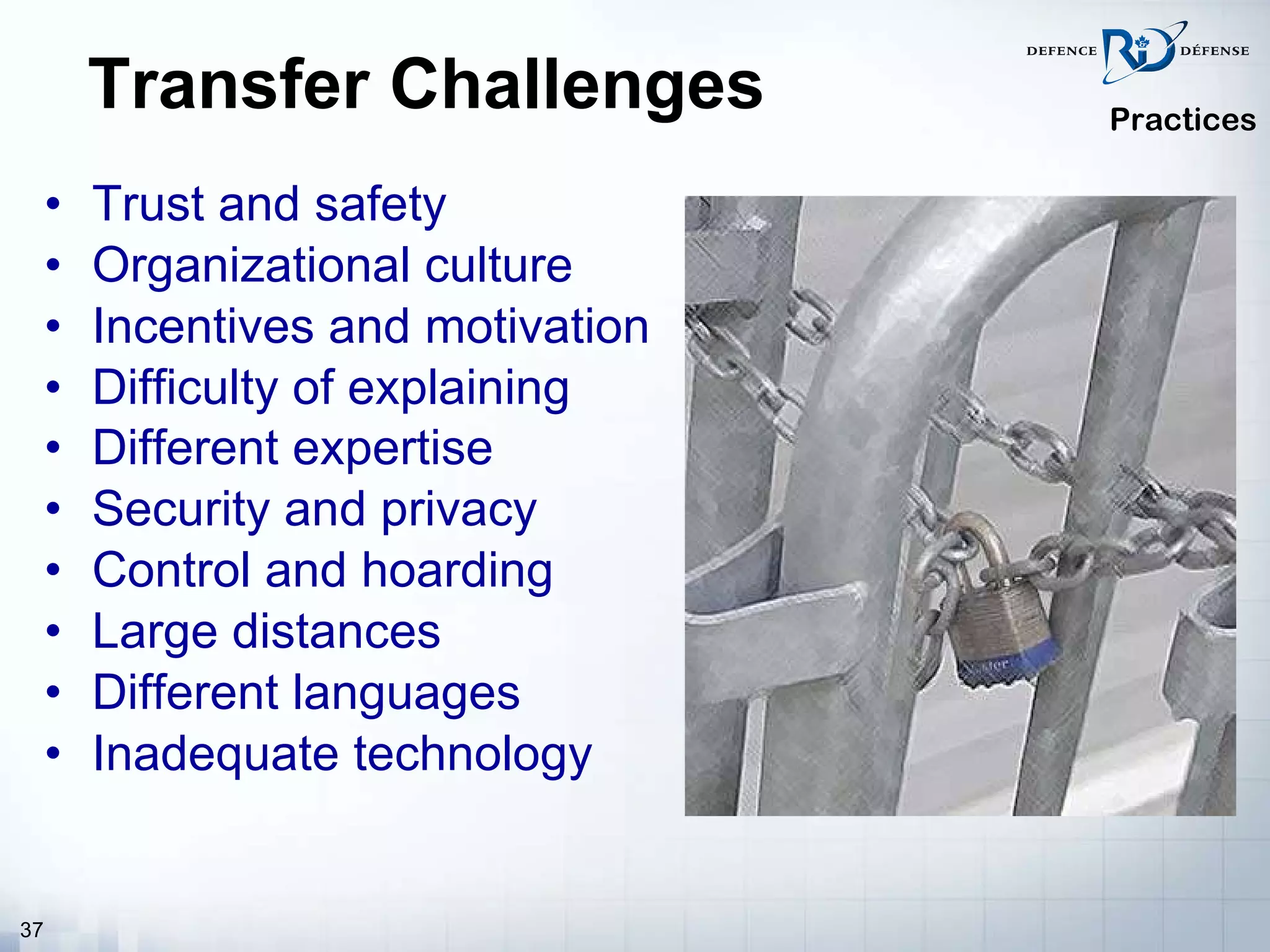The document discusses the importance of knowledge transfer in organizations, emphasizing its role in enhancing employee skills, engagement, and organizational competitiveness. It outlines various strategies and practices for effective knowledge transfer, including fostering communities of practice, leveraging technology, and ensuring collaboration between human resources and knowledge management. Additionally, it addresses the challenges of transferring knowledge during organizational changes and the need for continuous improvement in transfer methods.




